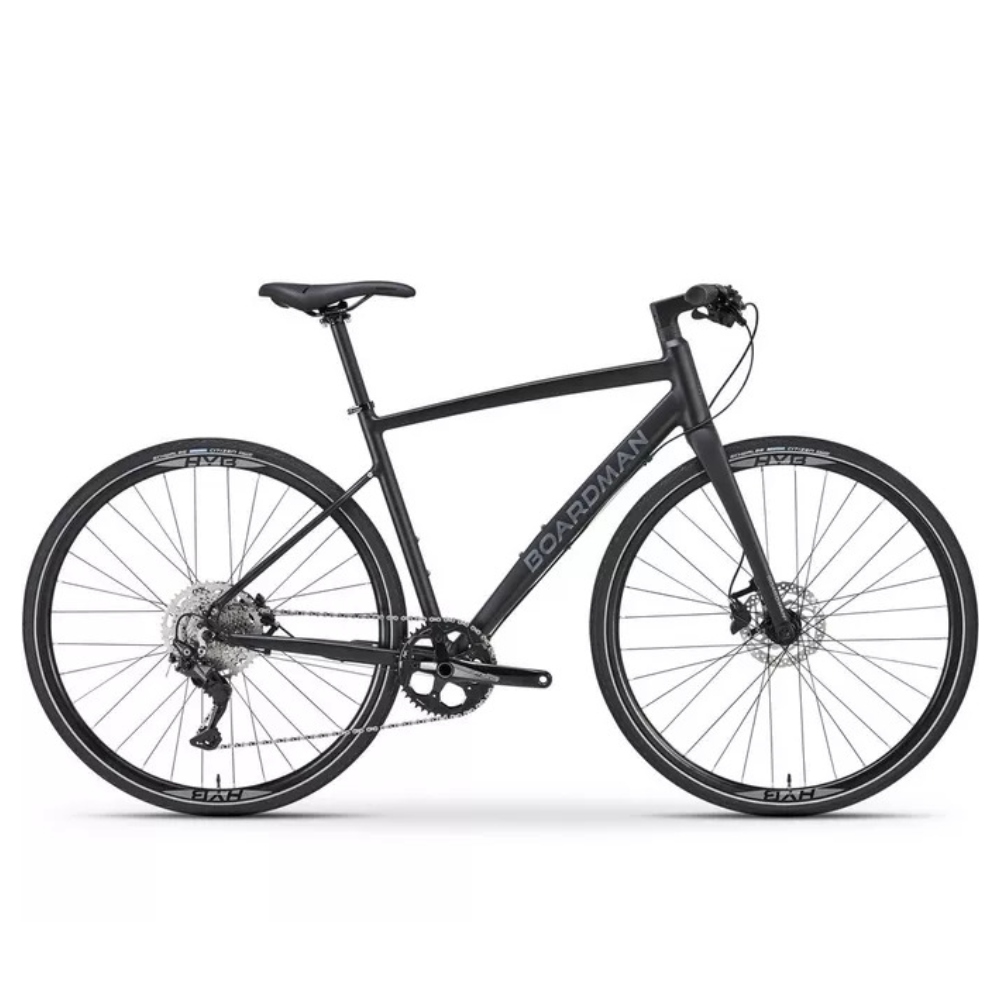Hybrid Bikes: An Overview
Hybrid bikes are a blend of road and mountain bike features. They suit diverse riding conditions. A typical hybrid bike has a comfortable, upright riding position. This eases pressure on the rider’s back. Hybrid bikes have wider tires than road bikes. This provides stability and comfort on various surfaces. They often feature flat handlebars. These handlebars give riders more control and a relaxed grip. For gearing, hybrids use a wide range. They handle hills and flat terrain well. Hybrid bikes are versatile for commuting, leisure rides, or light off-road trails. They often come with mounts for racks and fenders. This makes them ideal for daily use and carrying loads.
Road Bikes: An Overview
Road bikes are distinct from hybrid bicycles in several key aspects. Designed primarily for speed and efficiency, a road bike is most at home on paved surfaces. Its lightweight frame encourages swift movement. The narrow tires reduce rolling resistance, which helps increase speed. Unlike the flat handlebars on hybrid bikes, road bikes come with drop handlebars. These allow for multiple hand positions and an aerodynamic posture. The seating position is more aggressive, tilting the rider forward. This position optimizes power transfer from the legs to the pedals.
Road bikes feature a gear system that’s designed for flat terrain and inclines found on typical roads, favoring a quick cadence. They generally lack the rear rack and fender mounts found on hybrid bikes. This makes them less suitable for carrying heavy loads but does contribute to their lightweight nature.
With regards to use, road bikes are best for those who prioritize speed and efficiency over comfort, especially over long distances. They are the preferred choice for racing, endurance rides, and fast commuting on paved roads. While their design is not suited for off-road conditions, on smooth tarmac, a road bike could offer the exhilarating ride that a cycling enthusiast desires.
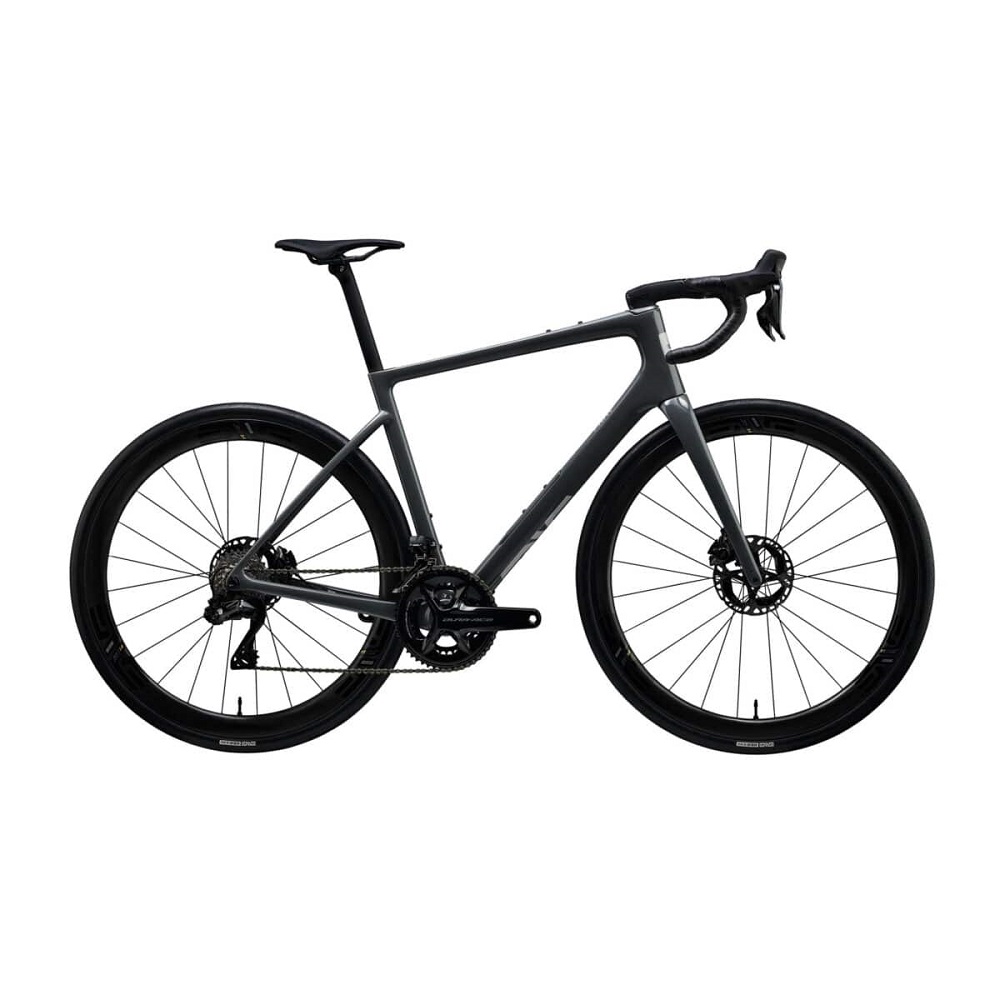
Key Differences Between Hybrid and Road Bikes
When comparing hybrid bikes vs road bikes, it is crucial to focus on their key differences. Each type of bike caters to specific riding styles and environments. Here are the distinct features that set them apart:
- Riding Position: Hybrid bikes offer an upright, comfortable posture ideal for casual rides. Road bikes promote a forward-leaning stance for speed and efficiency.
- Tires and Wheels: The tires on hybrid bikes are wider, giving stability on mixed surfaces. In contrast, road bikes have narrower tires for lower rolling resistance on pavement.
- Handlebars: Flat handlebars on hybrids provide a relaxed grip and control. Road bikes feature drop handlebars for multiple hand positions and aerodynamics.
- Bike Frame: Hybrids have versatile, often heavier frames for mixed uses. Road bike frames are lightweight, designed for quick maneuvers and speed.
- Gearing System: Hybrids have a broad gear range for varied terrains. Road bikes gear towards smooth, paved roads with systems for high-speed cycling.
- Mounting Capabilities: Hybrid bikes often come with mounts for accessories. Road bikes usually lack these, focusing on a sleeker, lighter build.
Understanding these differences can guide cyclists to make an informed decision based on their needs. Whether it’s commuting, leisure, or speed, choosing the right type depends on what you prioritize in your biking experience.
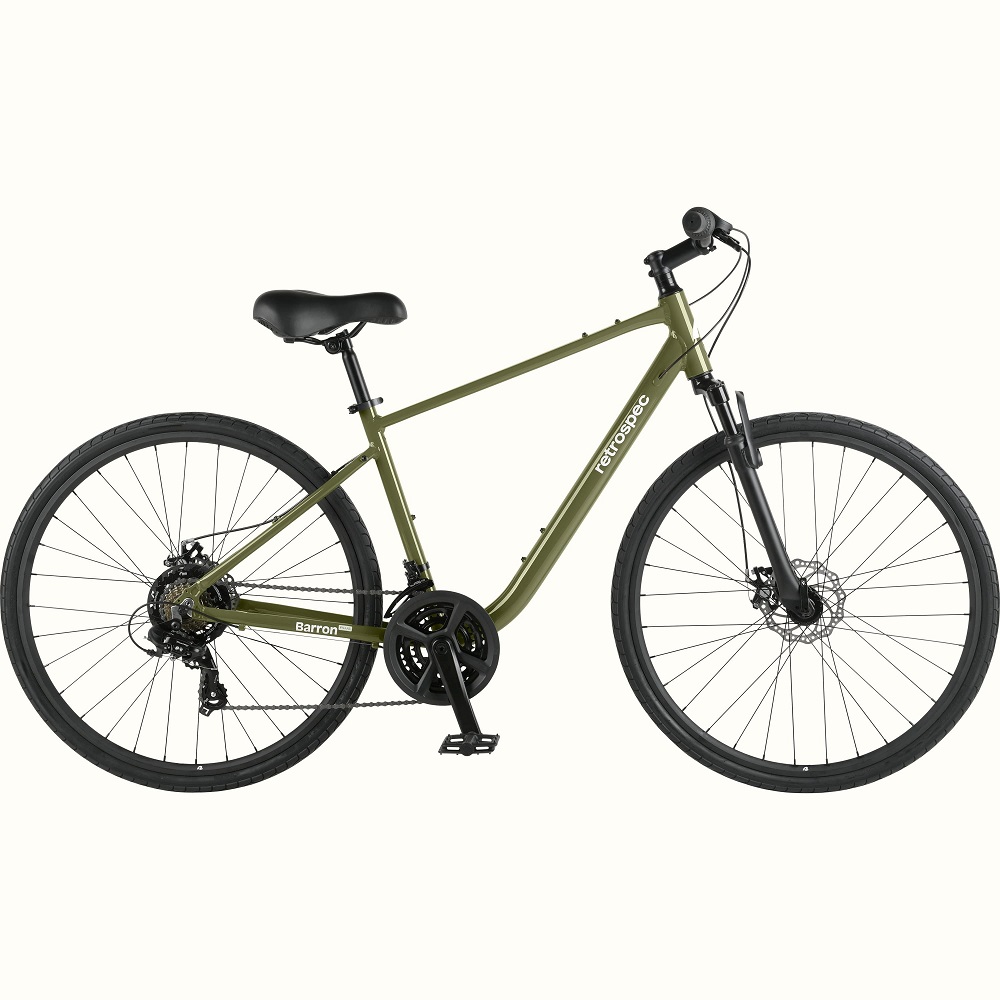
Pros and Cons of Hybrid Bikes
When choosing between hybrid bikes vs road bikes, understanding the advantages and disadvantages of each is key. Hybrid bikes come with their own set of pros and cons that cater to different types of cyclists and usage scenarios.
Pros
- Versatility: Hybrid bikes excel in various settings, from city streets to light trails.
- Comfort: The upright riding position reduces back strain and increases rider comfort.
- Stability: Wider tires offer better balance and control on mixed surfaces.
- Ease of Use: Flat handlebars and a broad gear range make for an accessible riding experience.
- Practicality: With mounts for racks and fenders, hybrids cater well to everyday needs, like commuting or running errands.
Cons
- Weight: They tend to be heavier, which can affect portability and speed.
- Efficiency: While stable, the wider tires generate more rolling resistance, reducing overall efficiency on roads.
- Speed: Due to their design and weight, hybrids are not as fast as road bikes, which may be a drawback for speed enthusiasts.
- Precision: Hybrid bikes are not as precise in handling as road bikes, especially at higher speeds.
In considering hybrid bikes vs road bikes, each cyclist must evaluate what aspects of cycling are most important to them. Hybrid bikes strike a balance between performance and usability but may not satisfy riders who are keen on maximum speed or intend to ride primarily on smooth pavements.
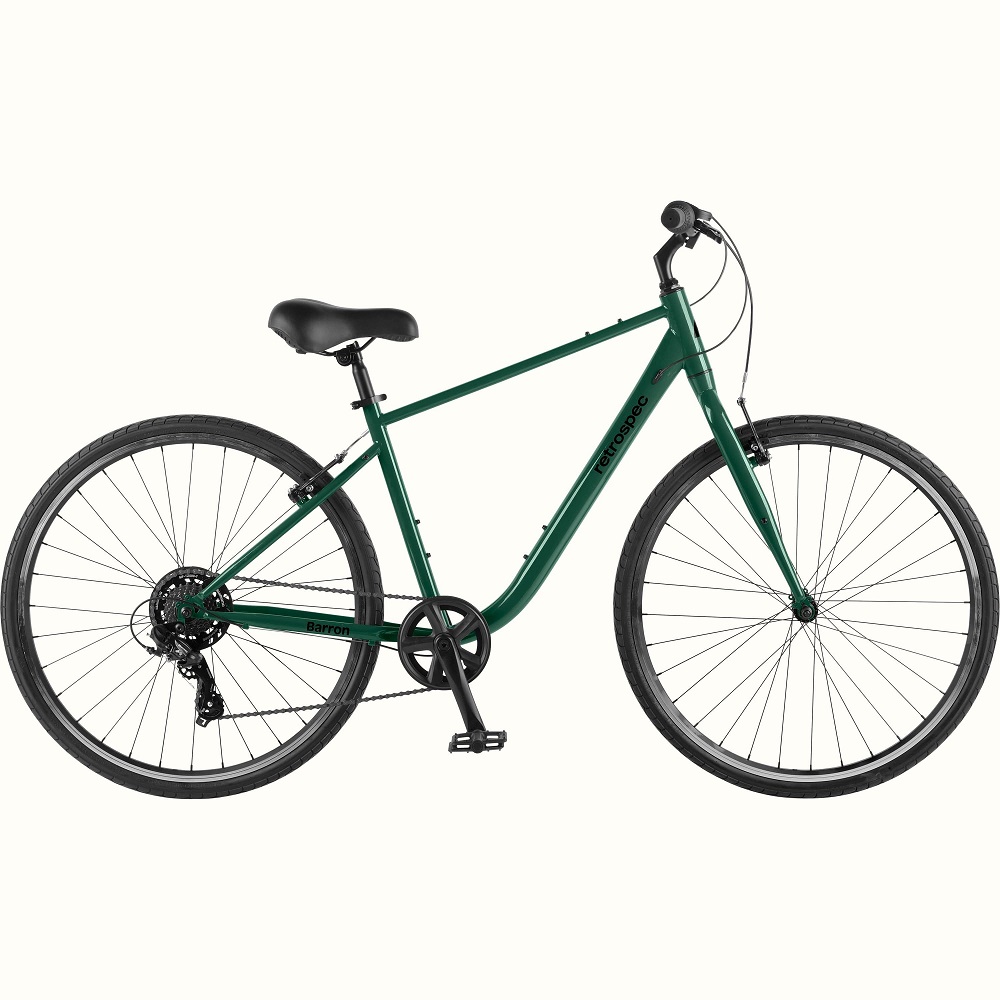
Pros and Cons of Road Bikes
When exploring hybrid bikes vs road bikes, it’s essential to assess road bikes’ strengths and weaknesses. These characteristics shape how well they fit into a cyclist’s lifestyle and ambitions.
Pros
- Speed: Road bikes are designed for high speeds on smooth surfaces.
- Efficiency: Their narrow tires and lightweight frames promote an efficient ride.
- Handling: Built for precision, road bikes offer superior handling, especially at high speeds.
- Aerodynamics: Drop handlebars enable an aerodynamic posture, minimizing wind resistance.
- Gear System: The gearing is optimized for the fast-paced cycling on roads.
Cons
- Comfort: The aggressive riding position may lead to discomfort on long rides.
- Versatility: Poor performance on off-road terrains limits their use.
- Durability: Lightweight construction can be less robust than that of hybrid bikes.
- Practicality: Lack of mounts for racks and fenders reduces utility for daily errands.
- Maintenance: High-performance parts may mean more frequent maintenance and higher costs.
Road bikes stand out in speed and efficiency, making them ideal for enthusiasts and racers. However, their design compromises comfort and versatility, which can be crucial for some riders.
How to Choose the Right Bike for Your Needs
Choosing the right bike is a personal decision. It depends on your cycling goals and preferences. For a bike that handles different terrains and offers everyday practicality, a hybrid might be best. Those seeking speed on paved roads might prefer a road bike. Consider where you’ll ride most often. Think about the distances you plan to cover and your fitness level. Factor in storage needs too. Hybrid bikes often allow you to add racks and fenders easily. For road bikes, a lighter setup means less to carry but also less space for extras.
First, assess your riding style. Are you riding for pleasure, fitness, or both? Do you plan on using your bike for commuting? If comfort and versatility are at the top of your list, hybrid bikes could be your match. If speed and efficiency are your focus, road bikes will likely suit you.
Secondly, consider what comfort means to you. Those with back issues or who enjoy a leisurely pace may opt for a hybrid’s upright position. Riders looking for efficiency and an aerodynamic edge might go with a road bike.
Lastly, don’t overlook the bike’s weight. A lighter bike like a road bike may be easier to transport and faster to ride. But a heavier hybrid may ride more smoothly on varied surfaces. Remember to try bikes before buying to get a feel for each type.
Your perfect bike fits your lifestyle. It should meet your needs for comfort, speed, and functionality. Use these insights to weigh the pros and cons as you make your choice between hybrid bikes vs road bikes.
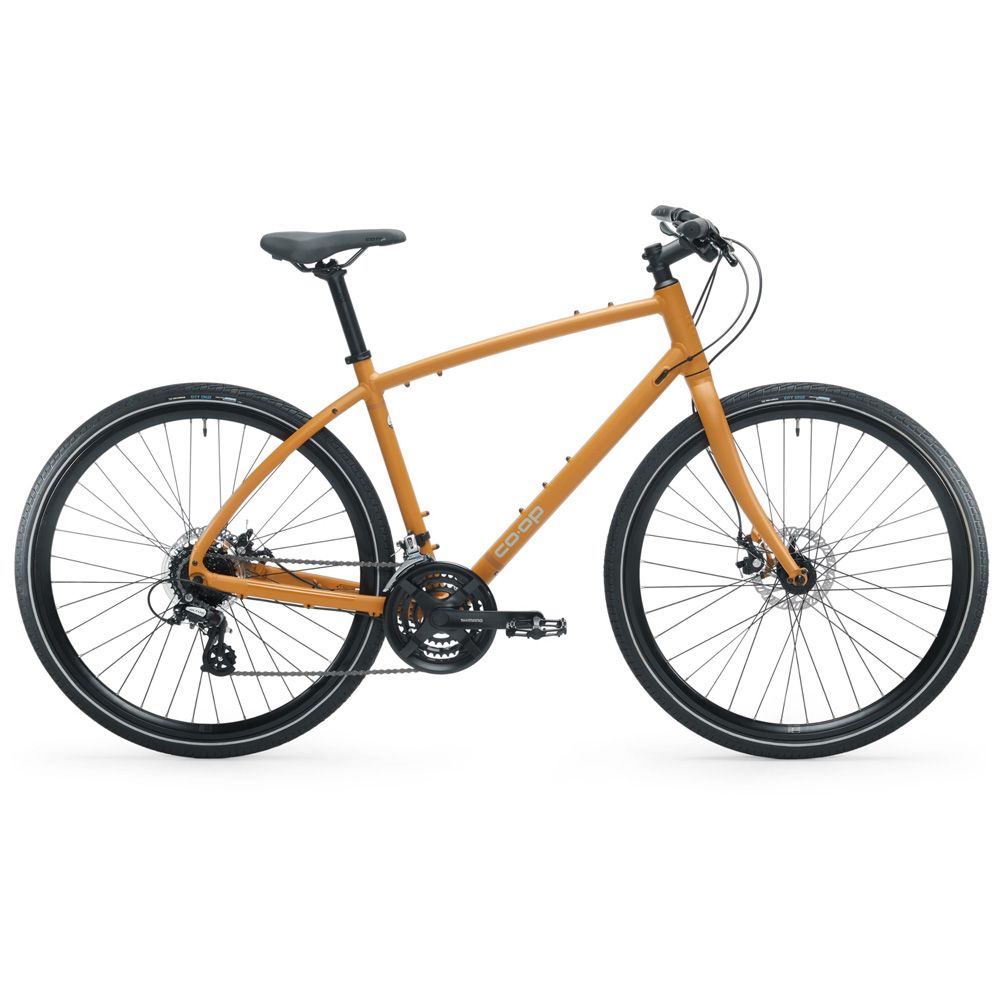
Factors to Consider When Buying a Hybrid or Road Bike
When you’re in the market for a new bike, the sheer number of options can be overwhelming. Whether you lean towards hybrid bikes or road bikes largely depends on your personal needs and preferences. Before you make a purchase, here are some crucial factors to bear in mind:
- Type of Riding: Consider the main use of your bike. If you’re into leisurely rides across various terrains, hybrid bikes might be the best fit. For high-speed road cycling, road bikes are the way to go.
- Budget: Determine how much you want to spend. Hybrid bikes can be more affordable, while road bikes might carry a higher price tag due to specialized features.
- Fit and Comfort: Always go for a bike size that fits your body. Comfort is key, regardless of the bike type you choose. Test different models for the best fit.
- Frame Material: Look into the frame materials. Aluminum is common and offers a good mix of durability and lightness. Carbon fiber is lighter but more expensive.
- Brakes and Gearing: Check the brakes and gear systems. If you’re riding in hilly areas, you’ll need more gears. Reliable brakes are essential for safety.
- Future Upgrades: Think about future upgrades. Hybrid bikes often have room for enhancements. Road bikes are less versatile but may offer superior initial performance.
- Availability of Spare Parts: Make sure you can get spare parts easily. Hybrid and road bikes may have different component demands.
- Reviews and Recommendations: Don’t ignore reviews. What others say about their experience can guide your decision.
By weighing these factors carefully, you’ll be better prepared to choose the ideal bike that suits your needs and delivers the best riding experience. Keep in mind the key differences between hybrid bikes vs road bikes, and choose the one that aligns with your cycling goals.
Maintenance and Upkeep for Hybrid and Road Bikes
Maintaining your bike keeps it running smoothly and extends its life. Whether you own a hybrid or a road bike, regular upkeep is essential. For both bike types, basic maintenance includes keeping it clean, checking for wear, and ensuring all parts work well.
Hybrid Bikes
- Regular checks: Inspect your bike after each ride for any loose parts.
- Cleaning: Wipe down the frame and clean the gears and chain regularly.
- Tire pressure: Keep tires inflated to the recommended level for stability and ease.
- Brake pads: Check often for wear and tear, and replace them when needed.
- Gears: Make sure your gears shift smoothly. Adjust them if you notice issues.
Road Bikes
- Keep it light: Remove any dirt or grime buildup to maintain speed.
- Tire inspection: Check your tires often for cuts or wear that could affect performance.
- Lubrication: Apply oil to the chain frequently to ensure smooth rides.
- Aerodynamics: Ensure your bike is streamlined by checking for loose cables or parts.
- Professional tune-ups: Take your bike to a shop yearly for a thorough check.
Both types of bikes benefit from a routine maintenance schedule. Stick to it for the best performance. Store your bike indoors to protect it from weather damage. Learn simple repair skills to handle minor issues. With proper care, your bike will take you on countless enjoyable rides, no matter the type.

Final Thoughts: Making Your Choice
Assessing Your Needs and Preferences
When choosing between hybrid bikes and road bikes, the best approach is to assess your riding style and preferences. If you plan to ride mainly on paved roads and prioritize speed, a road bike is likely the best fit. These bikes provide speed and efficiency for those who aim for longer distances and dream of participating in events.
Conversely, if you want versatility and comfort, a hybrid bike might be your best option. Hybrids offer the ability to switch between terrains and are perfect for commuting, exploring, or casual riding. Their practicality makes them suitable for everyday use, especially for those who seek a balance between comfort and performance.
Test Rides and Research
Ultimately, the best way to determine the right bike for you is to test ride various models. Many bike shops offer opportunities to test different bike types, allowing you to evaluate how they feel. Pay attention to aspects such as comfort, handling, and overall fit during your ride.
Additionally, do thorough research on the specific brands and models available in your price range. Online reviews and recommendations from fellow cyclists can provide valuable insights. By combining your research with firsthand experience, you can confidently choose the bike that suits you best.
Finding the Right Fit for Your Cycling Journey
Both hybrid bikes vs road bikes offer unique advantages and characteristics that cater to different riding styles. Understanding these differences can help you choose the right fit for your cycling needs. Whether you prioritize speed and performance or comfort and versatility, there is a bike out there that will enhance your cycling journey.
In 2025 and beyond, the biking community will continue to evolve. As new technologies emerge and consumer preferences shift, both hybrid and road bikes will adapt to meet those expectations. Ultimately, the best bike is the one that allows you to enjoy the freedom and thrill of riding, wherever your cycling journey may take you.
